How to Publish an App on Google Play
Introduction
Have you developed an Android app and want to make it available to a global audience? The best idea is to publish your app on Google Play. It’s the most popular app store for Android devices, with over 2.5 billion active users, about 3.5 million apps, and almost 4,000 apps released daily.
But how to publish an app on Google Play? What are the steps and requirements involved?
The process of publishing an app on Google Play is relatively straightforward. There are a few steps that you need to follow to ensure that your app is successfully approved and published.
In this article, we will guide you through the process of publishing your app on Google Play, from preparing to readiness to submit Android app for review and distribution. We will also cover some best practices and tips to help you optimize your app’s performance and visibility on the app store.
Steps to Publish App on Google Play Store
Step 1: Prepare Your App
To publish an app on Google Play, you will need the following:
- An Android App Bundle (AAB file) that is built and signed with a digital certificate.
- A digital signing certificate: This is a file that is used to sign your app, which ensures that it is authentic and has not been tampered with.
- A short description of your app, which should be no more than 80 characters.
- A full description of your app, which should highlight its features and functionality.
- A high-resolution icon for your app, which should be 512 x 512 pixels and in PNG format.
- At least two screenshots of your app interface, which should be in JPEG or 24-bit PNG format and have a minimum dimension of 320 pixels.
- A feature graphic for your app, which should be 1024 x 500 pixels and in JPG or 24-bit PNG format.
- A content rating, which should reflect the appropriate age group and content type of your app.
- A privacy policy, which should disclose how your app collects, uses, and shares user data.
- Application type: Choose whether it’s an app or a game.
- App category: business, travel, education, etc.
- An end-user license agreement (EULA): This is a document that outlines the terms and conditions under which users can use your app.
- Payment and Pricing: Decide whether your app is free, paid, or has in-app purchases. Set the pricing and country availability accordingly. You will need a valid payment gateway to receive payments from users for paid apps or in-app purchases.
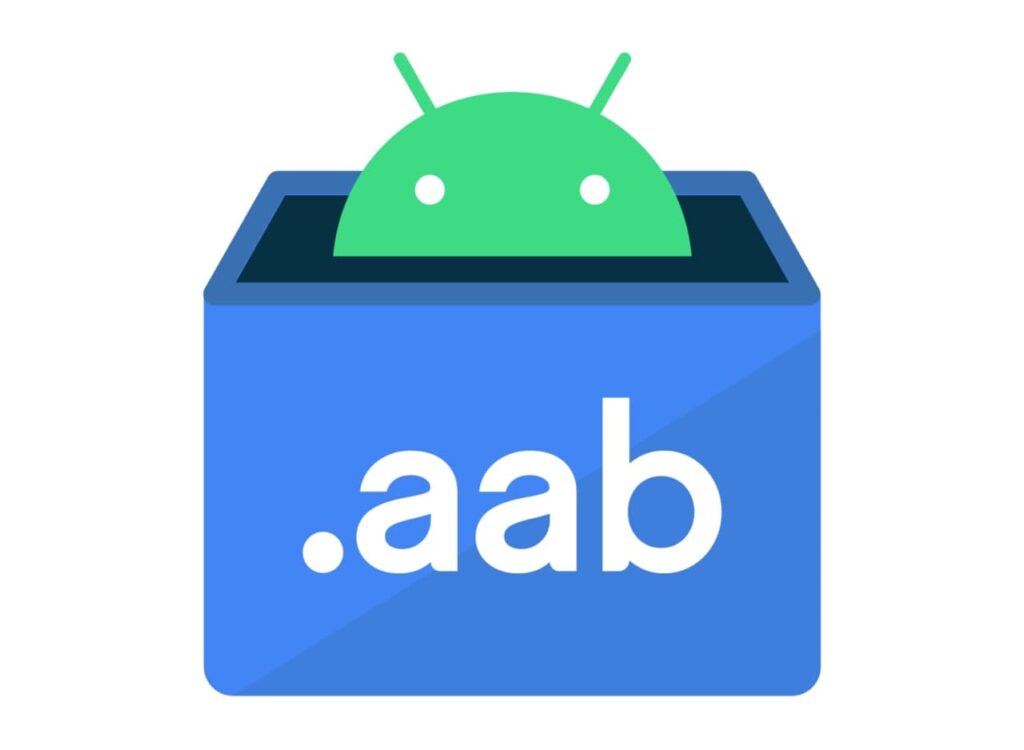
These are the basic requirements to publish an app on Google Play. Depending on your app’s features and functionality, you may also need to provide additional information or assets, such as a video trailer, a banner asset, a Wear OS screenshot, an Android TV screenshot, or an Android Auto screenshot.
Step 2: Create a Google Play Developer Account
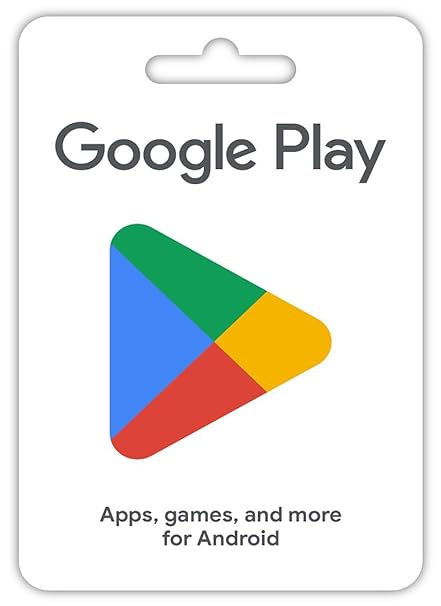
Creating a Google Developer Account is quite easy and requires just a few steps.
- Sign into your Google account. To kickstart the process, you’ll need a valid Google Account. If you don’t have one yet, create it on this page (https://accounts.google.com/signup). Make sure you provide accurate information and choose a strong password.
- Open the Google Play Console page (https://play.google.com/console) to create an Android developer account. This is a centralized hub for managing your apps, APIs, credentials, billing, publishing updates, performance analysis, and other settings.
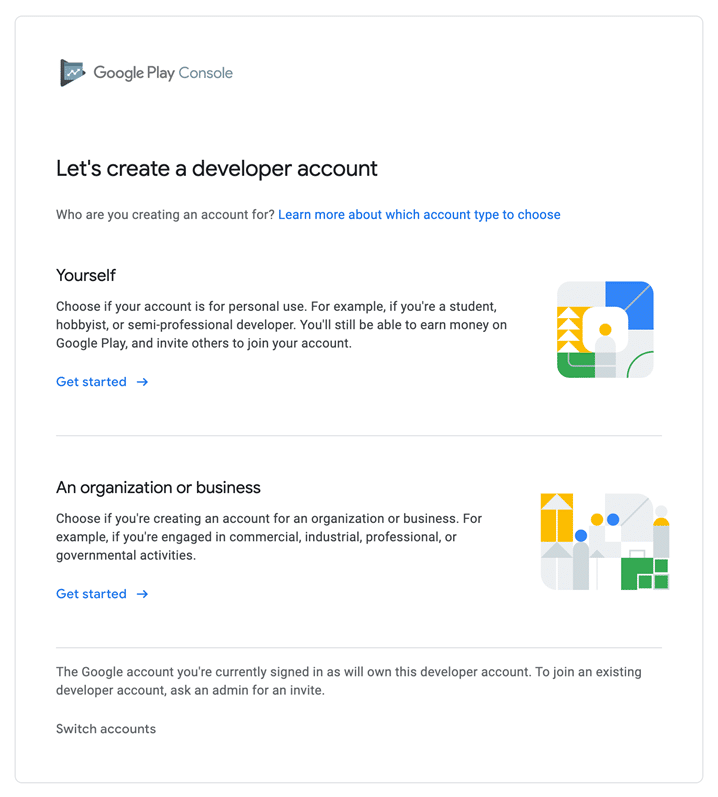
3. If you create a developer account for personal use, give some of your details, add your website address or social media profile, fill in the account and contact name, contact email address, select your preferred language, and enter your contact phone number.
4. For a company account, enter the developer’s name, organization type, size, address, business phone number, and website.
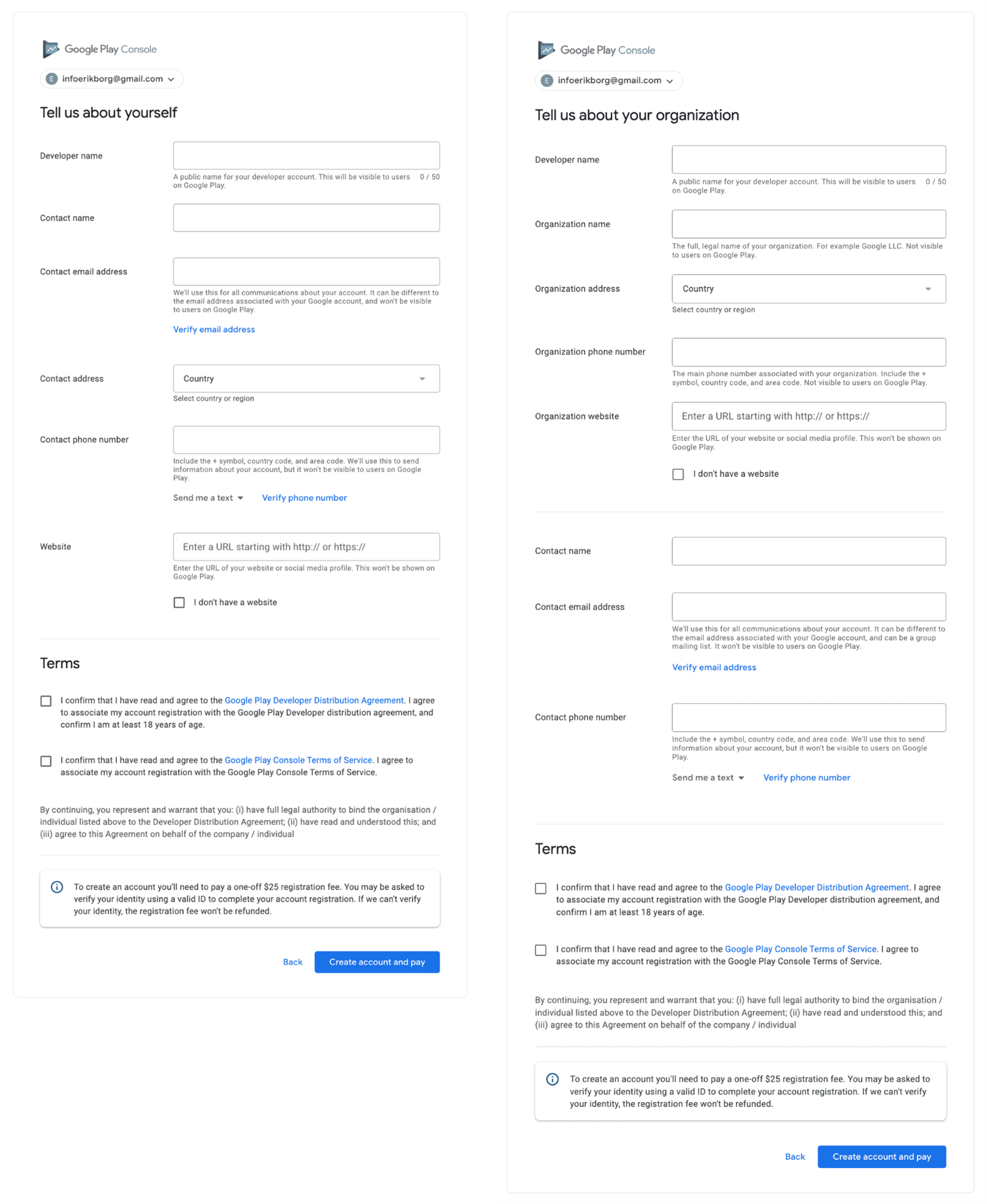
5. Next, select the number of apps you plan to publish on Google Play in the next 12 months and how you plan to earn money on Google Play and choose your app categories.
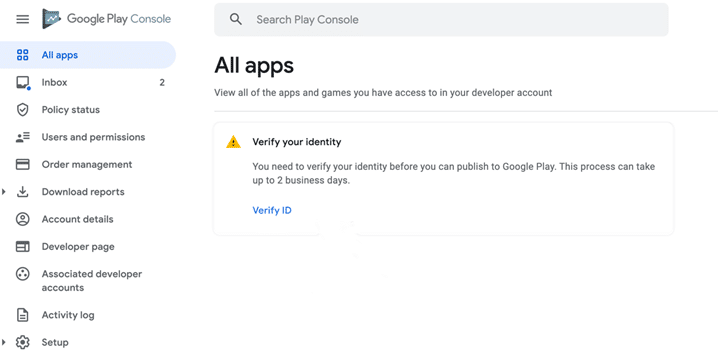
6. Verify your Google Developer account. Add Look for the “Verify ID” option on the screen and click on it to proceed. Provide all requested information and documents to begin the verification process. Once you complete the registration process, you will have access to the Google Play Console, where you can manage your apps and settings.
Step 3: Connect Developer Account to Google Wallet Merchant Account
If your mobile app includes in-app purchases, you’ll need to set up a merchant account. To do this, sign into your Google Play Console account and navigate to Reports > Financial Reports. Within this section, you’ll find the Set up a merchant account now option. Click on it, and a form will appear prompting you to fill in your details.
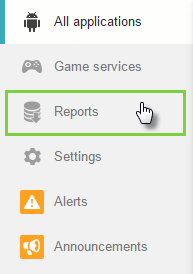

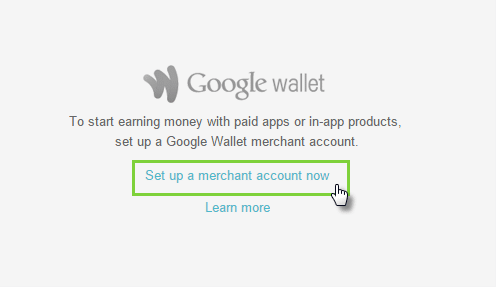
By completing this form, you’ll establish a merchant account that will automatically link to your Google Play Console. This connection will grant you the ability to manage and monitor your app’s sales with ease. Embrace this seamless integration and unlock the full potential of your app on Google Play.
Step 4: Create App
- Once your app is ready for upload, in Google Play Console, go to the All Applications tab in the sidebar and select Create Application option.

- Choose the default language for your application from the drop-down menu.
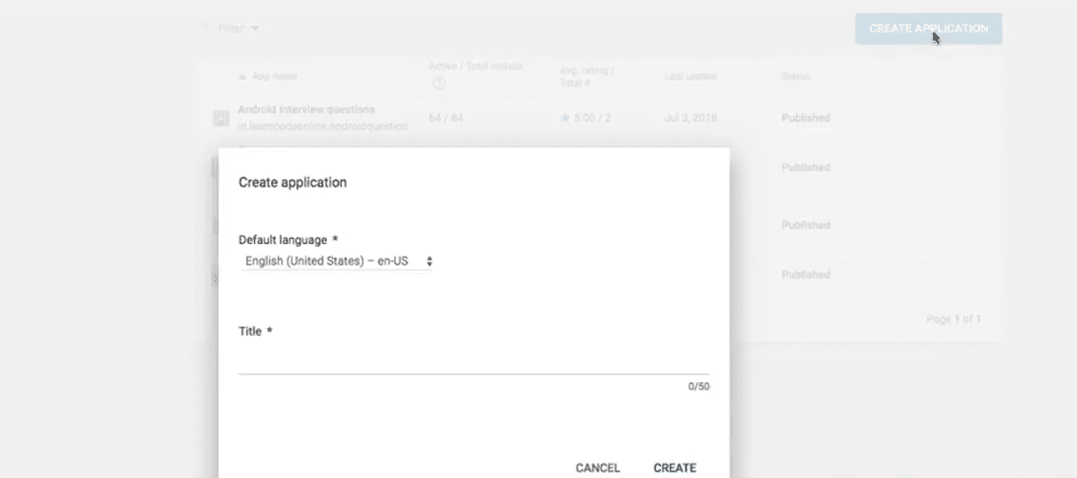
- Enter your application’s title (don’t worry, you can modify it later).
- Click on the Create button to proceed.
Step 5: Fill in the Store Listing
The store listing is the page that showcases your app to potential users on Google Play. It includes information such as your app title, icon, screenshots, video trailer, description, category, tags, contact details, and privacy policy.  Here is what you should remember:
Here is what you should remember:
- The category should reflect the main functionality of your app, and the content rating should indicate the appropriate age group and content type of your app.
- The icon should be clear and recognizable, and it should not contain any text or transparent backgrounds.
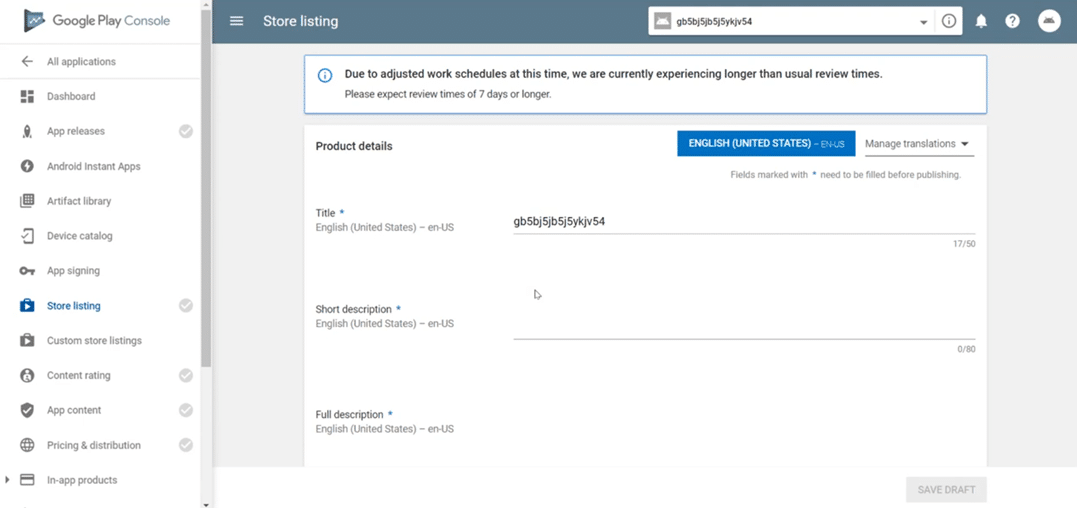
- The screenshots should showcase the main features and functionality of your app, and they should not contain any borders or watermarks.
- The feature graphic should be attractive and relevant to your app, and it should not contain any text or logos.
- The short description should be no more than 80 characters, and it should summarize the main value proposition of your app.
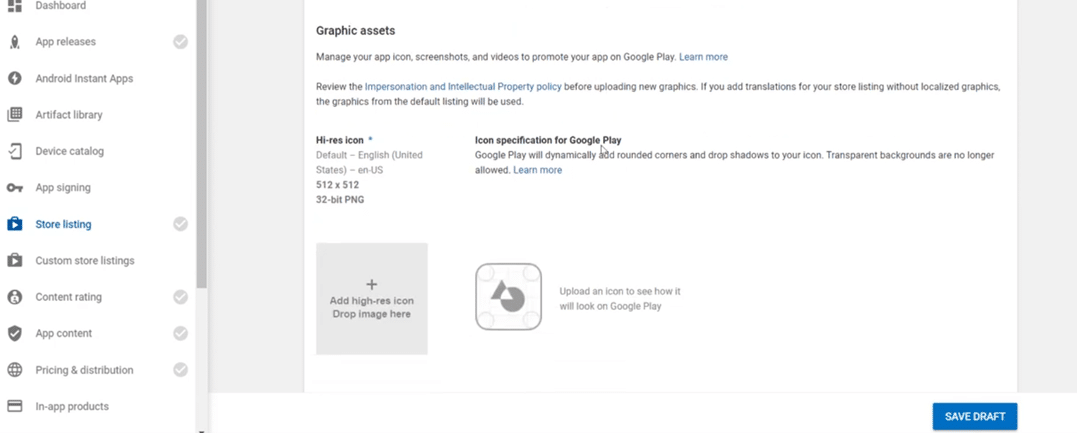
- The full description should be between 80 and 4000 characters, and it should highlight the features and functionality of your app in detail. You should use clear and concise language, avoid spelling and grammar errors, and include relevant keywords.
- You can upload a privacy policy file or provide a URL to an online privacy policy. The privacy policy is mandatory if your app handles personal or sensitive user data.
Step 6: Upload App Bundle or APK to Google Play
Now, it’s time to upload your app to Google Play Store. Here’s how to do it:
- Go to the App Releases section and scroll down to the Production track. Click on the MANAGE button to proceed.
- Once redirected to the next page, click on the CREATE RELEASE button.
- On the following page, you’ll find the Android App Bundles and APKs to add a section, where you can upload your APK file. Simply select your APK file and proceed.

- Afterward, click on the SAVE button to finalize the release.
Step 7: Add Content Rating
- Next, go to the Content rating section and click on the CONTINUE button.
- In the new window, provide and confirm your email address.
- Select your app category from the available options.

- Make sure to carefully read all the questions and answer them accurately.
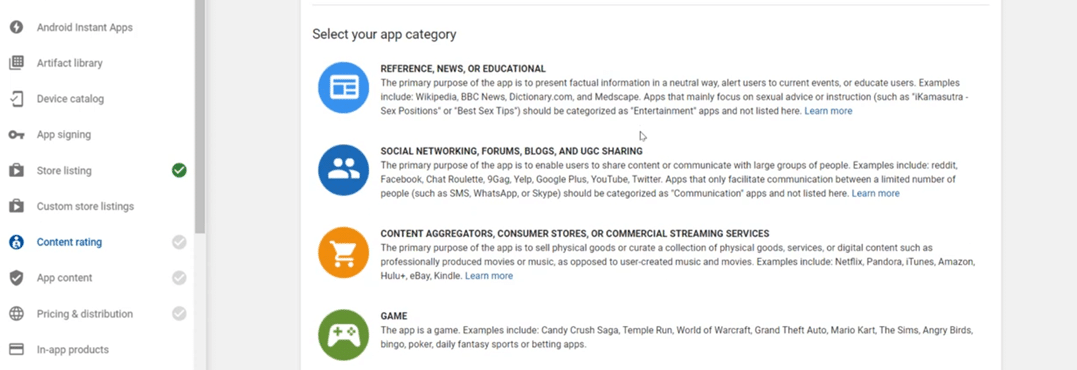
- After answering all the questions correctly, remember to click on the SAVE QUESTIONNAIRE button.
- Once you’ve saved all the necessary information, click on the CALCULATE RATING button.
- Upon redirection to another page, scroll down and click on the APPLY RATING button.
Congratulations! You’ve completed the Content rating section. Don’t forget to notice that the Content rating section has now turned green, indicating completion.
Step 8: Set Up Pricing and Distribution
You can set up the pricing and distribution options for your app by clicking on Monetization in the left menu and then on Pricing & Distribution. You can choose whether you want to offer your app for free or for a price. Follow these steps:
- Next, navigate to the Pricing & Distribution section. From there, choose the countries where you want your app to be available.
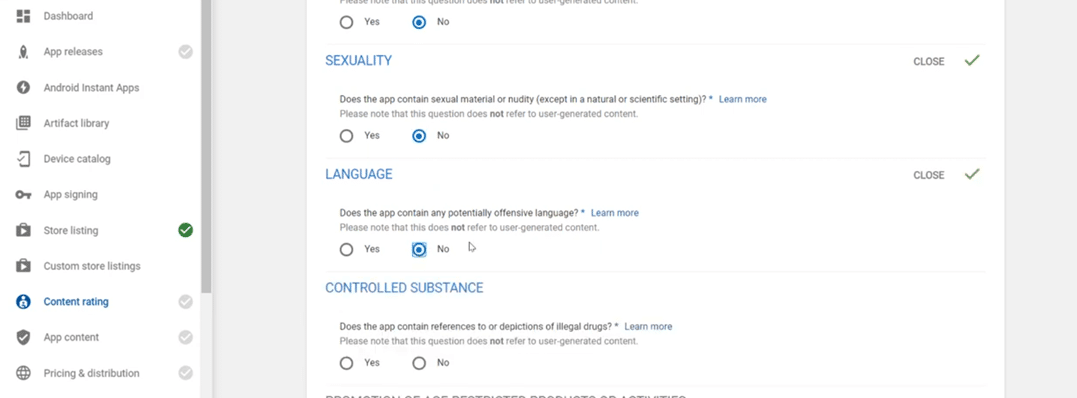
- As you scroll down, make sure to carefully review and comply with the Content guidelines and US export laws sections by ticking the corresponding checkboxes. Afterward, click on the SAVE DRAFT button.
- Take a moment to observe that the Pricing & distribution section has now turned green, indicating that you have completed this important step successfully.
Step 9: Add App Content
- Let’s now proceed to the App content section. Within this section, navigate to the Privacy Policy subsection and click on the Start button.

- Provide a valid Privacy policy URL, as Google will verify this information to ensure compliance.
- Next, go back and move on to the Ads section by clicking the Start button. Select whether your app contains ads or not, and then click on the SAVE button.
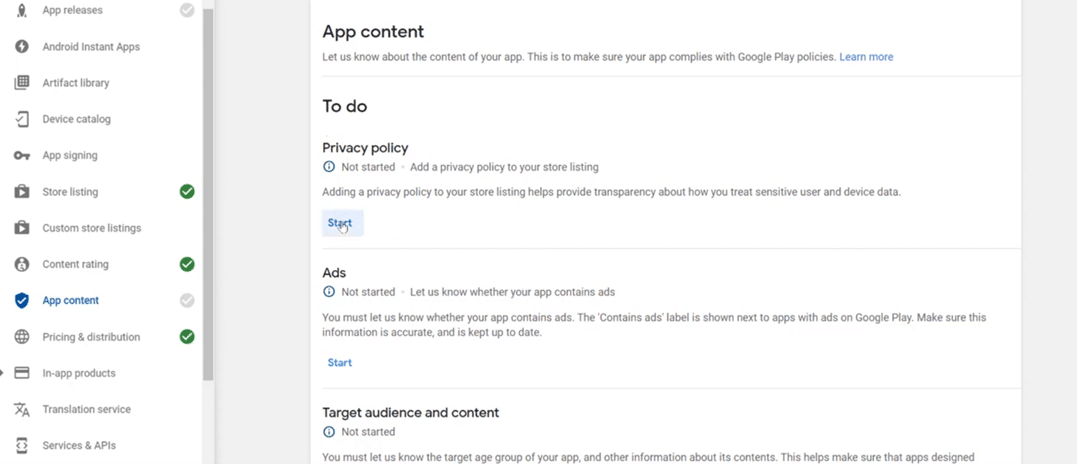
- Once again, go back and continue to the Target audience and content section by clicking the Start button. On the following page, select the appropriate Target age group and click Next.
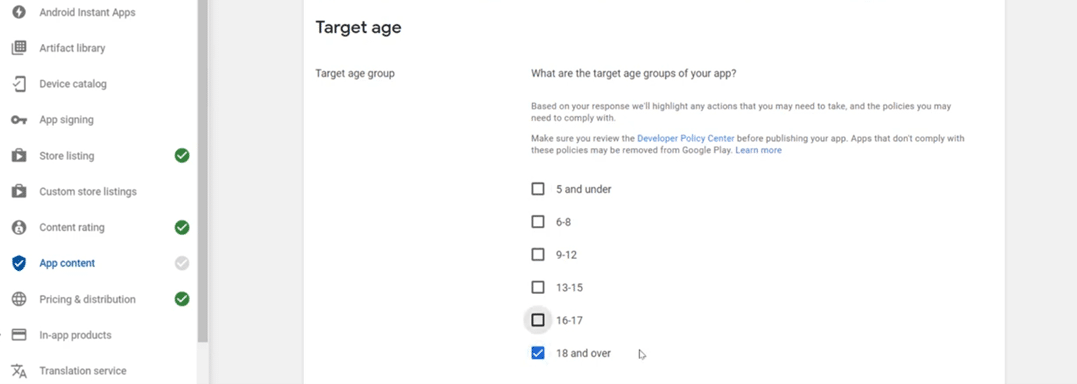
- Don’t forget to review and check the Appeal to Children section before proceeding to the next step.
- Now, click on the Next button on the subsequent page, and finally, click on Save to complete the App content section.
Step 10: Submit Your App for Review
Once you have completed all the steps above, you are ready to submit your app for review.
- Revisit the App releases section. Within the Production track, click on the EDIT RELEASE button.
- On the following page, scroll down and find the REVIEW button. Click on it to proceed.
- Finally, on the new page, click on the START ROLLOUT TO PRODUCTION button to submit your app for review. Congratulations, you’ve completed the process!
Your app will then be reviewed by the Google Play team to ensure that it meets the quality and policy standards of the platform. The review process may take from a few hours to a few days, depending on various factors. You will receive an email notification when your app is approved or rejected. If your app is approved, it will be published on Google Play and available for users to download. If your app is rejected, you will need to fix the issues and resubmit it for review.
Frequently Asked Questions
How much does it cost to publish an app on Google Play?
It costs $25 to create a Google Developer Account, which is required to publish apps on Google Play. All subsequent app publications are free of charge.
How long will it take to publish an app on Google Play Store?
It takes minutes to publish your app on Google Play Store. However, the review process for new apps can take anywhere from a few hours to a few days. How long to publish app on Google Play depends on a number of factors, including the app’s quality, safety, and compliance with Google Play policies.
What files do I need to publish my app?
You’ll need an APK or App Bundle file, which contains your app’s code and assets. Make sure it’s properly signed and ready for distribution.
How do I set the pricing for my app?
You can choose to offer your app for free or set a price. In the Google Play Console, go to Pricing & Distribution to set the price and select the countries where your app will be available.
Can I update my app after it’s published on Google Play?
Yes, you can update your app whenever you need to. Use the Google Play Console to upload new versions with bug fixes, improvements, and new features. Regularly updating your app keeps it fresh and engaging for users.
Is a Privacy Policy necessary for my app?
Yes, providing a Privacy Policy is essential, especially if your app collects user data. It’s a requirement by Google Play and helps build trust with users.
Can I test my app before the public release?
Absolutely! You can use the Internal Test, Closed Test, or Open Test tracks in the Google Play Console to test your app with a select group of users before the official release.
How can I track my app’s performance and user feedback?
The Google Play Console provides analytics and user feedback tools that allow you to monitor your app’s performance, user reviews, and ratings.
How can I unpublish or delete my app from Google Play?
You can unpublish or delete your app from Google Play using the Google Play Console. This will remove your app permanently from Google Play and you won’t be able to use the same package name again.
How can I monetize my app on Google Play?
You can monetize your app on Google Play using different methods, such as charging a price for your app, offering in-app purchases, displaying ads, or subscribing to Google Play Pass.
What are the requirements for publishing an app on Google Play?
To publish an app on Google Play, it must be developed using the Android Studio SDK, signed with a valid digital signature, be free of malware and other malicious code, and comply with Google Play policies.
What is ASO, and how can I optimize my app’s visibility on Google Play?
ASO stands for App Store Optimization. It involves using relevant keywords and attractive visuals, creating a compelling store listing, using keywords in your app description, running paid advertising campaigns, submitting your app to app review websites, and promoting your app on social media
Conclusion
Publishing your app on Google Play is a great way to reach a global audience. It can help you reach millions of users and grow your business. However, it also requires careful planning and preparation, as well as following the Google Play guidelines and policies. By following the steps and requirements outlined in this guide on how to make Android app and publish on Play Store, you can publish your app on Google Play with confidence and success. We hope you found this guide helpful and informative.
Save your time! Request Google Play upload by AppsGeyser professional
